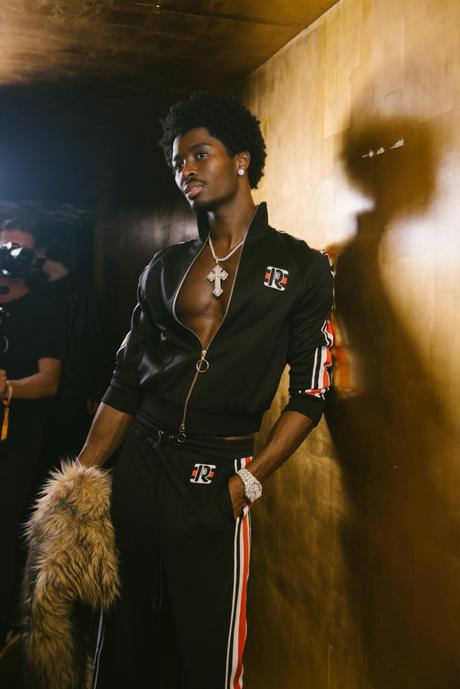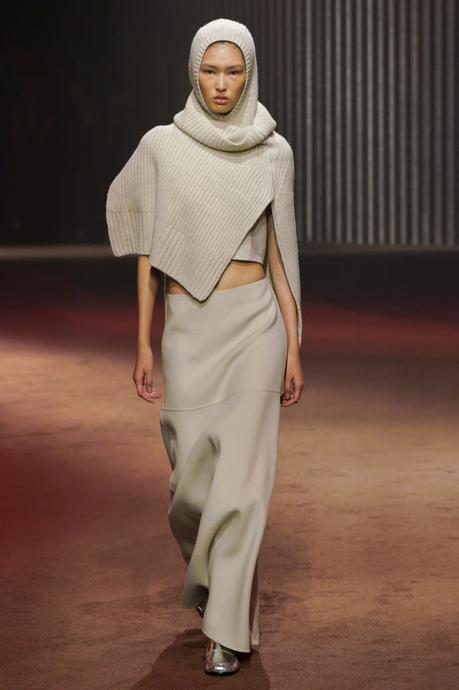PARIS - Turnover down, profit up. Lower prices, scale up design. If H&M Group's new CEO Daniel Ervér was looking for "exciting friction," he got it in the first-quarter results unveiled Wednesday.
Ervér used the term to define what the company is aiming for with its long-term goals: a mix of fashionable clothing with a stronger emphasis on design, while lowering prices, especially in the US.
More from WWD"Exciting friction" is how Ervér described the predicament in which both customers' desires and their wallets must be satisfied. Ervér was clear that the company will reduce prices by the end of 2024.
The words were a response to the mixed bag presented in the results for the three months to February 29. Sales fell two percent year-on-year in local currency during the key holiday shopping period, while figures from the first three weeks of March rose two percent in local currency, ahead of a stronger second quarter.
These are the first results presented under the leadership of Ervér, who took over in a surprise move on January 31 after consecutive quarters of slow and flat sales.
Ervér continues to adhere to the group's previously stated priority of achieving an operating margin of 10 percent and focusing on profitability: the company thus continues on that path by improving sales, reducing costs and inventory to keep under control.
Operating profit amounted to 2.08 billion Swedish kronor, or 181.4 million euros, as the company tries to achieve that goal. This far exceeded the expectations of analysts, who had expected a profit of around 125 million euros.
Shared rose nearly 20 percent in afternoon trading as investors cheered the beat.
But the new CEO described a difficult balancing act ahead as the company looks to scale up the perception and quality of its flagship H&M brand while lowering prices.
The story continues
H&M has been under pressure on both sides so far, with fast-fashion rival Zara benefiting from its trendy brand perception and achieving historically high sales even as it has raised prices, and Chinese ultra-fast fashion players such as Shein offering bargains galore.


As it looks to lower prices, H&M also hopes to expand its fashion offering. "This is where we want to make what is inaccessible to many, accessible to many, creating that friction between what is premium, but at a very accessible price point. We want to build this brand position," he said. Ervér explained that idea extends to fashion design, but also to higher-end retail environments.
The company's new retail positioning has been rolled out at the new concept store on King's Road in London, which opened last Thursday, offering a more luxurious and curated fashion mix, along with an improved focus on customer service and styling tips.
"We also see that it is important to regain credibility and win the customer's heart," says Ervér. He sees physical retail as an important part of this and will "step up the ambitions" for personal customer interaction.
The group will renew 250 stores worldwide, with a focus on key cities including New York, Berlin and Stockholm, which will be modeled on the new London concept, as well as mid-level shopping center locations which, while not requiring London-level upgrades can support will be 'influenced' by this concept.
The group will close 60 net stores in 2024, open 100 doors in new and growing markets, and close 160 stores in established markets. About 30 percent of group sales are online, the company said, and it has about 200 million customers in its loyalty program.
At the same time, the company will try to cut prices, especially in the US, where first-quarter sales fell 7 percent in local currency.
"We look at all our markets... where we need to invest and adapt to ensure we are competitive, but we have an extra focus on this in the US given the performance," Ervér said. Inflationary pressures and the popularity of platforms like Shein have hurt performance. "The US is one of those markets where we place extra emphasis on ensuring we have the best value for money and a highly competitive offering," he said.
Efforts to improve brand perception will also lead to increased marketing spend, especially on social media. The group is also testing an improved H&M website in Denmark, with a better design and user experience. The site, which is still in a testing period, has boosted sales and engagement in the country and is expected to be rolled out to other markets later this year.
Portfolio brands such as COS, Monki, & Other Stories and Arket performed stronger than flagship H&M, with sales increasing 8 percent in local currency in the first quarter. Although the company would not break it down by brand, executives repeatedly highlighted the performance of COS, the portfolio brand seen as the most luxurious and fashionable, whose aesthetics align with the quiet luxury trend and appeal to an older demographic.
The price for COS can be up to four times the price of H&M or Monki, and the company has presented catwalk shows in an attempt to position itself as a fashion player.


Price reductions remained sharp, with discounts in the first quarter up about half a percentage point year-on-year. However, Ervér indicated that this was a strategy play in the inflation environment, and more than a pure product mix error.
"We have experienced an environment where we have had to use price cuts to activate the customer base," the executive said, noting that these price cuts will stabilize in the coming quarters. The company is investing in AI to better predict the right product mix and in nearshoring to shorten response times to fashion trends.
Bringing production closer to market, such as nearshoring European production to Turkey for example, will also stabilize shipping costs after the turmoil of 2023. The dramatic increase in shipping costs that hit at this time last year has been taken into account , and not Ervér. does not expect any impact in the coming quarters, although the company is monitoring geopolitical headwinds and the security situation in the Red Sea.
Earnings were also boosted by the company's strong cost control measures following layoffs in 2023 and in January, as well as lease renegotiations. That discipline is paying off so far. Selling and administrative expenses fell by three percent in local currency in the first quarter, and the cost savings program is expected to result in savings of 2 billion Swedish kronor, or approximately 175 million euros, once fully implemented.


"We also continue to simplify our organization to make it more efficient and faster. Other examples of continued improvements include increased nearshoring and enhanced digitalization and AI efforts, ensuring customers have access to the most relevant fashion every time they meet us. Quarterly sales gradually improved in February with well-received spring collections, which is a positive sign that we are on the right track," said Ervér.
The group has also nominated Helena Saxon, a former director of Goldman Sachs and Investor AB, as a member of its board of directors, which is expected to be approved at the company's annual general meeting on May 3.
The best of WWD